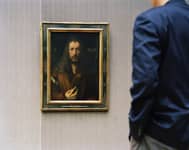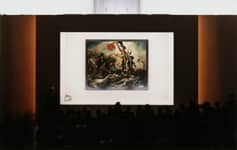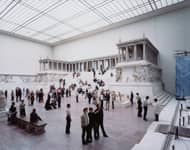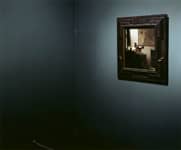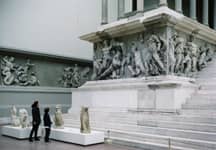Following the completion of these photographs, he did not envisage returning to the theme of people in museums. But in 1999 he visited the exhibition of a single work by Delacroix, Liberty Leading the People (1830) at the National Museum of Art in Tokyo and was immediately struck by its unorthodox display. Risers had been built for the audience, who stood or sat in darkness as in a movie theatre; in place of the screen there was a brilliantly lit glass case containing the Delacroix painting. Struth decided to delay his return to Germany, obtained permission from the Louvre overnight, and went back to the museum the following day to make a photograph of this particular interaction of a contemporary crowd and a historic painting of ‘the people’. On the same visit to Tokyo, Struth also made a photograph of a single Japanese man looking at a display of historic Samurai swords in the same museum.
One final Museum Photograph also offers a contemplative presentation of a single painting, Vermeer’s Woman with a Lute, which was on temporary exhibition at the National Gallery in London. For the first and only time, Struth focuses solely on the painting and the empty space around it, rather than including any viewers within the frame of the picture.
Although he realised a long-held ambition to work at the Museo del Prado in Madrid in 2005 and the resulting series can be considered a substantial coda to his work in museums, Struth considered these three singular works to be his “farewell to the series, a triple jump out of the museum photographs.”

